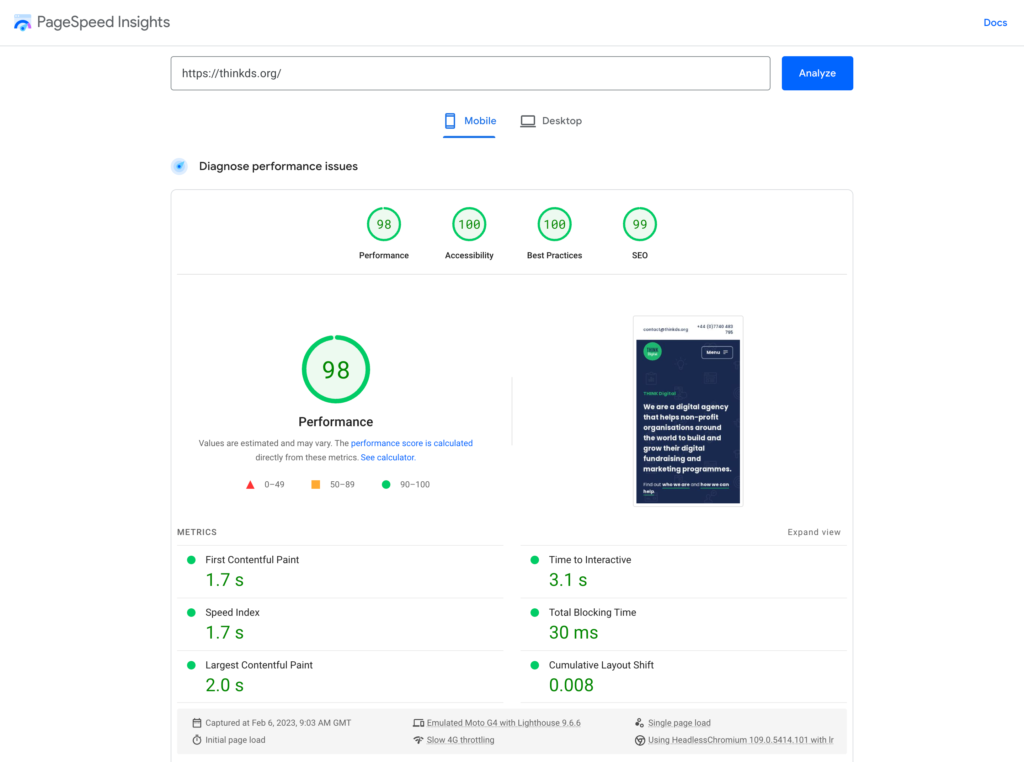Why is it important?
Page load speed can be a critical factor in getting potential donors over the line to complete their donation. It can impact many aspects of your website including:
User experience
Ensuring a fast-loading website helps to increase user satisfaction and engagement. Conversely, a slow-loading website can lead to user frustration and abandon the process altogether.
Conversion rates
Slow-loading websites are one of the most common reasons for higher bounce rates, reduced donor engagement and lower conversation rates.
Search Engine Optimisation (SEO)
Google includes page load speed as a ranking factor in their algorithm so ensuring your website is fast-loading can help to improve your search engine ranking.
Other benefits include mobile optimisation, especially for those on slower internet connections or costly data packages. It’s not just the user that this affects though as slow-loading websites can use more bandwidth, increasing costs for your organisation.
How to test performance?
There are many free and paid services available to help track website performance, but here are some we find most helpful:
Google PageSpeed Insights
A free tool that provides a score for the performance of any website URL (for both mobile and desktop) as well as recommendations to improve the score. https://pagespeed.web.dev/

Browser Dev Tools
Whether you use Chrome, Safari, Edge or Firefox, all major browsers provide developer tools to monitor the performance of your website. The “Network” tab allows you to see how long it takes to load resources such as images, scripts and stylesheets and the impact it has on your site.
Monitor Tools
If you want to track performance over a longer period you can use monitoring tools like Google Analytics to view detailed reports on various metrics such as page load speed.
How to improve your page load speed
Improving the page load speed for your website will require a combination of front and back-end changes. The most common improvements include:
Optimising images
Spending time optimising assets such as images can help to make page load speed faster and less data consumption. Using modern image formats such as WebP and AVIF can be helpful but general compression alone can provide significant savings to users.
Minimising requests
Be mindful of what assets are being loaded as they can significantly slow down your page load speed, in particular third-party scripts from Facebook, Google, YouTube and Stripe. This can be avoided by only using code that is needed on specific pages or deferring loading until they are required.
Minifying HTML, CSS and Javascript
Files are often larger than they need to be. Minifying them, a process that removes white space, comments and line breaks in your code, can help to reduce bandwidth and make pages load faster while maintaining all design elements and functionality.
Enable caching
When users navigate to a URL in their web browser, the browser makes a network request to fetch that content, and then your server receives the request and returns the page content. Optimising this to work as quickly as possible, by using a cached version of your website can help to speed it up.
Use a Content Delivery Network (CDN)
A CDN uses a network of servers around the world. When a user visits your website, they are served a cached version from the closest available server to their location. This, alongside fast and reliable hosting, will help to reduce latency and make your site load faster.
Implementing these simple improvements alongside regular testing and monitoring can ensure landing pages load quickly for your donors, leading to higher engagement and increased conversion rates.

